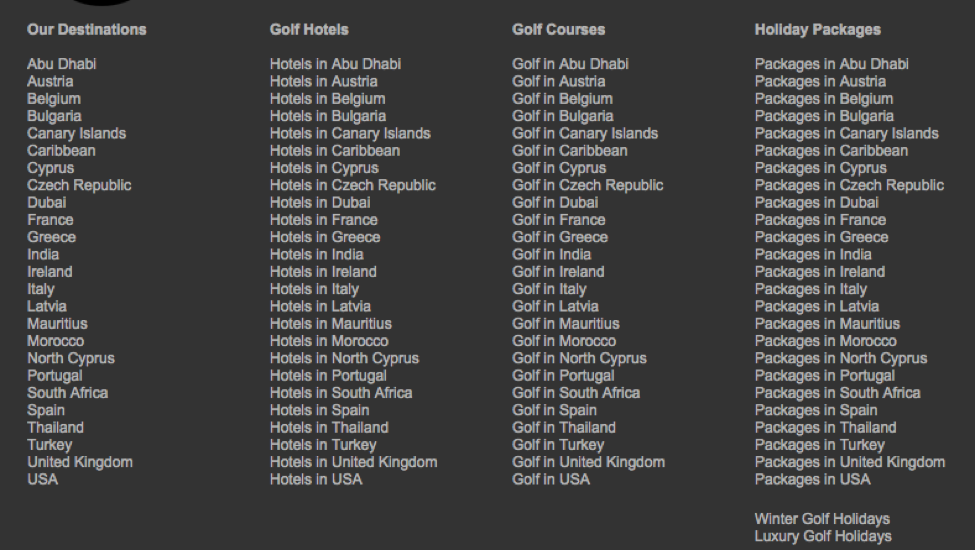
Which Pages are Considered “Low-Quality” by Google?
We know that the core of SEO is built around creating high-quality content and web pages. As search engines like Google are evolving and getting smarter, they are focusing heavily on presenting only the best possible web pages on the internet.
Web pages that have a poor user experience, low-quality content, and technical blunders, find it very difficult to get to the top of Google’s search engines results pages (SERPs).
We are told again and again not to produce “low-quality” web pages.
But what exactly are low-quality web pages? What are the factors on the basis of which Google determines if a web page is of low quality or high quality?
In this article, we take a look at some of the major factors that Google considers when determining web pages as low quality.
Unnatural Internal Link Structures
One of the oldest black-hat SEO techniques in the book is to create an unnatural or excessively artificial internal link structure to power up some web pages.
Nowadays, not many people resort to this black-hat SEO technique, but it is still not uncommon to accidentally end up doing something similar.
Take a look at the following screenshot.
If you have an unnatural link structure — powered by footers and sidebars of your website homepage — Google is not going to like it.
Google considers such websites as low-quality and untrustworthy because of how excessively they are trying to force internal links to certain pages.
Other examples include spam comments or spam pages.
Excessive Monetisation of Website Content
It is obvious that website owners create high-quality content to drive traffic — traffic that they could sell to. However, they still need to be subtle about it.
If a website indulges in over-monetisation of content, Google might identify it as a low-quality web page that is more focused on monetisation of content instead of prioritising user experience and providing high-quality information to its website readers.
Examples of over-monetisation of content include excessive use of affiliate links and ads.
In short, you need to be able to identify and realize if your web page is trying to deceive visitors. If it is trying them to click on an affiliate link or ad, despite the high-quality content it will be a risk. A Google penalty may not be very far.
Nathan Johns, who is a Google’s search quality analyst, once tweeted about how news websites like Outbrain and Taboola that mix affiliate links and ads with website content should think twice before doing it.
Websites with heavy sponsored content have seen a decline in search engine rankings, and that’s mainly because of Google seeing them prioritising the wrong things — monetisation opportunities over an easy user experience and high-quality content.
The following image shows a decline in the search engine positions of websites that have heavy sponsored contents. A recent Google search engine ranking algorithm update penalised such websites.
An important takeaway here is that it’s not just news aggregator websites that are at risk. Any website that is over-monetising content with affiliate links, ads, and sponsored content might not be in the good books of Google.
Furthermore, as Google continues getting smarter, the ground for such websites will continue shrinking.
Trust Factors for E-Commerce Online Stores
Unsurprisingly, Google also uses various trust factors for online e-commerce stores for determining if a web page is of low quality.
As you know, e-commerce stores, which people don’t really trust, experience a low conversion rates, a high exit rate, and a high bounce rate. Less engagement is another result of websites that either aren’t very secure or don’t have trust factors, e.g., https encryption, SSL certification, etc.
Furthermore, Google also expects e-commerce websites and online stores to have proper return and refund policies, privacy policies, delivery information, and details of terms and conditions. The website owners should create separate pages for these important pieces of information so that they can be easily found. Moreover, links to these pages must not be broken. Website visitors should be able to access these pages with ease and convenience. Therefore, it is also a good idea to have these pages linked directly from the homepage.
Last, but not the least, these conditions do not just apply to high-end e-commerce stores. Any website that sells a product or service, or let people add products to their carts, fall under this category.
Conclusion
Although all these factors that Google uses to determine which web pages are of “low quality” may seem difficult to remember, they are not. As you can see, most of these factors revolve around providing the best user experience to your website visitors.
If, for one reason or another, you are compromising on giving the best user experience to your visitors and prioritising monetisation, SEO, or conversions over it, you might find it difficult to consistently rank higher in the SERPs — especially as Google continues to evolve and become smarter than ever before.
If you have been struggling to rank your website higher in the search engine rankings, it would be a great idea to evaluate your web pages based on the factors mentioned above.
After all, if Google deems your web pages as “low quality”, how are you going to top the search engine ranking charts?










